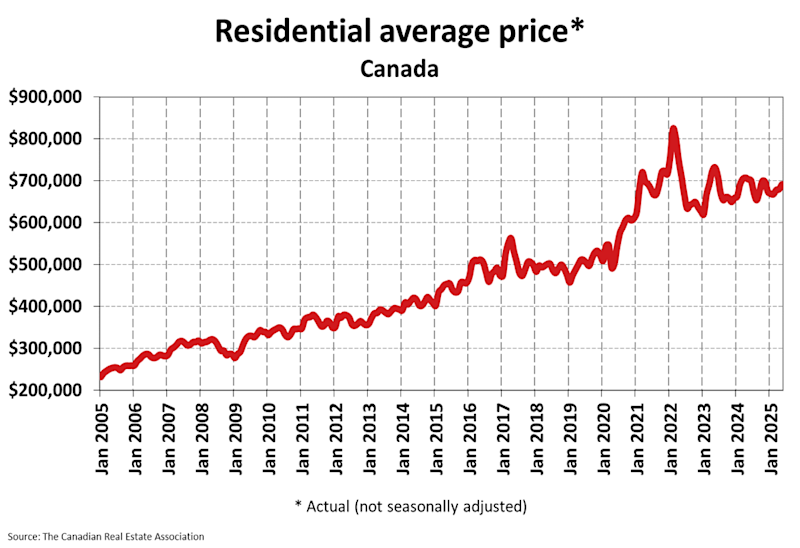
Steady Growth while Diversifying Your Investment Portfolio
Canada’s real estate market often generates headlines, but for savvy investors, it presents a compelling picture of stability, long-term growth, and diverse opportunities. While market conditions can vary by region, the underlying strengths of Canadian real estate make it a cornerstone for a well-diversified portfolio.
A Foundation of Stability and Long-Term Growth
Historically, Canadian properties have demonstrated remarkable resilience, even through economic shifts. Over the past decade, the market has seen steady appreciation, offering a more stable alternative to volatile stock markets. This trend is backed by fundamental drivers that continue to fuel demand.
Key strengths include:
- Steady Appreciation: While market conditions fluctuate, Canadian properties have shown consistent long-term appreciation. As much as there are peaks and troughs like a stock market, the peaks and troughs tend to be less volatile. See the Canadian Real Estate Statistics page at https://creastats.crea.ca/en-CA/ for more detailed analysis.
- Hedge Against Inflation: Real estate acts as a strong hedge against inflation. As the cost of living and construction rises, so too do property values and rental income, helping investors maintain their purchasing power.
- Tangible Assets: Unlike abstract investments, real estate provides a tangible asset with dual income potential: rental yields and capital appreciation. This makes it a foundational component of diversified portfolios.
- Easier to Understand: Mortgage Investments tend to be a little simpler in how they work. Investor’s money is lent to a borrower in need at a certain rate of interest based on risk factors of the loan, the interest earned through the loan is returned to the investor, net of operation costs.

Driving Forces: Population Growth and Demand
One of the most significant factors underpinning the strength of Canadian real estate is its robust population growth, largely driven by immigration. This continuous influx of new residents creates persistent demand for housing across the country.
- Immigration-Fueled Demand: Canada’s strong immigration policies ensure a steady increase in population, directly translating into a need for more housing units, both for ownership and rental. CMHC projects Canada needs 1.2 million new housing units by 2030 to meet this demand.
- Urbanization and Economic Hubs: Major cities like Toronto, Vancouver, Montreal, Calgary, and Edmonton continue to be economic powerhouses, attracting talent and investment, further bolstering local real estate markets.
Diverse Opportunities Across the Map
The Canadian real estate landscape is incredibly diverse, offering a range of investment opportunities beyond traditional residential properties.
- Residential Properties: From urban condos to single-family homes, residential real estate remains a popular choice for investors seeking rental income and appreciation. While some areas like Toronto and Vancouver have higher prices, others like Calgary, Edmonton, and various parts of the Atlantic provinces offer more affordable entry points with strong growth potential.
- Commercial Real Estate: Commercial spaces, including retail and office properties, also present opportunities, with some markets seeing renewed investor confidence. Currently, Northern Alliance Trust is not investing in any commercial opportunities.
- Alternative Investments: Beyond direct property ownership, investors can explore Real Estate Investment Trusts (REITs) and Mortgage Investment Corporations (MICs), offering passive exposure to the real estate market.
Navigating the Current Landscape
While the overall outlook remains optimistic, it’s essential for investors to be aware of current market dynamics. Interest rates, while having impacted affordability, are showing signs of easing, which could stimulate demand. Government policies, such as the continued foreign buyer ban and measures to encourage housing construction, also play a role in shaping the market.
Key considerations for investors:
- Regional Variations: The Canadian market is not monolithic. While some areas like British Columbia and Ontario have seen price adjustments, provinces like Alberta, Quebec, and the Atlantic provinces are experiencing strong growth and demand. Tailoring strategies to specific regional dynamics is crucial.
- Affordability: Affordability challenges persist in some major markets, leading some investors and homebuyers to explore more accessible regions.
- Long-Term Perspective: Real estate is generally a long-term investment. While short-term fluctuations can occur, the underlying demand drivers and historical performance suggest continued strength for Canadian real estate over the long run.
We continue to believe that Canadian real estate, with its strong fundamentals, ongoing population growth, and diverse investment opportunities, continues to be an attractive asset class for investors seeking stability and wealth creation. By understanding the key drivers and regional nuances, investors can confidently navigate this dynamic market.
For more information about investing in Canadian Real Estate, please check out our Investors Page here; https://www.natrust.ca/investors/

